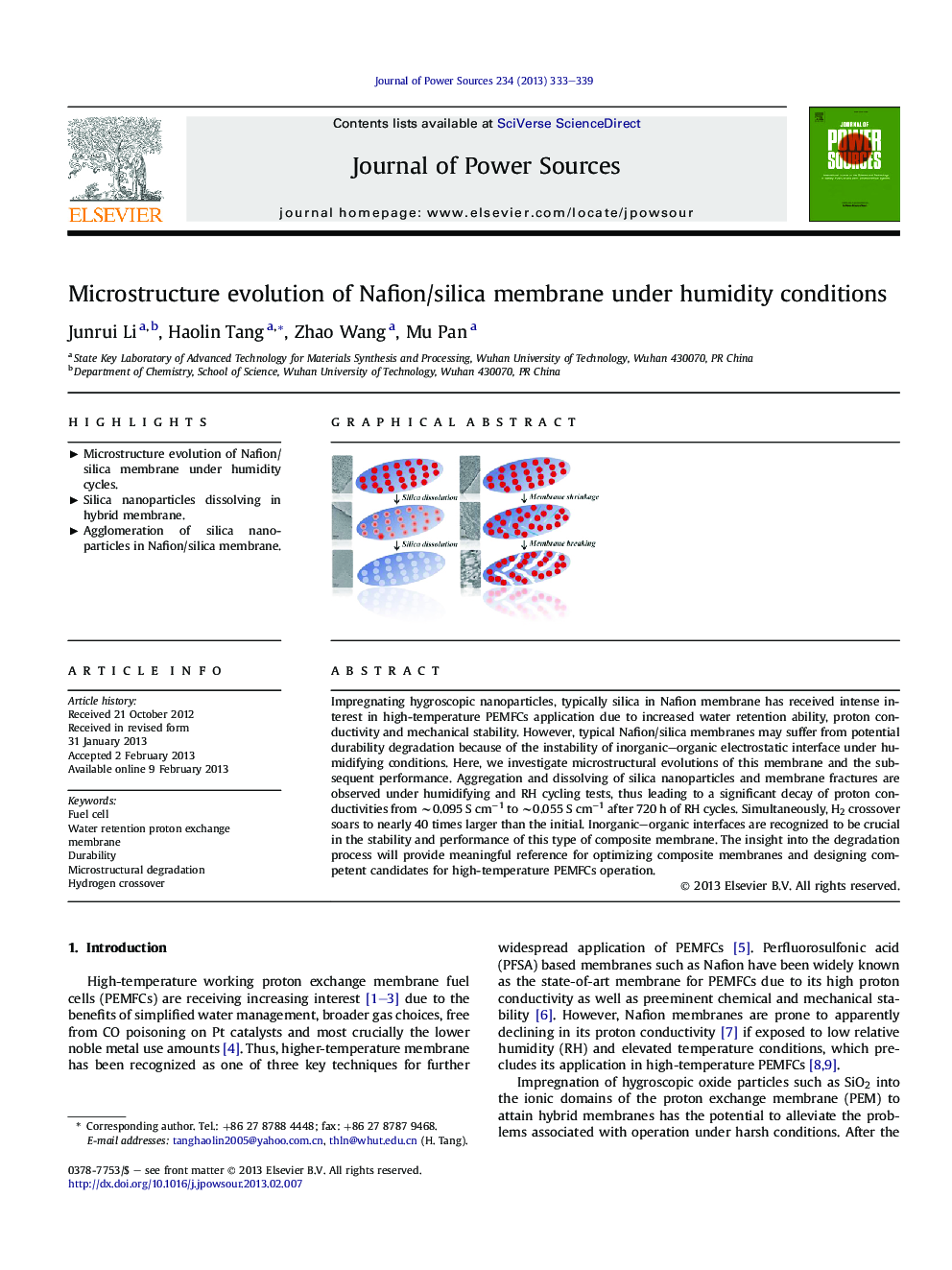| کد مقاله | کد نشریه | سال انتشار | مقاله انگلیسی | نسخه تمام متن |
|---|---|---|---|---|
| 1287950 | 1497998 | 2013 | 7 صفحه PDF | دانلود رایگان |

Impregnating hygroscopic nanoparticles, typically silica in Nafion membrane has received intense interest in high-temperature PEMFCs application due to increased water retention ability, proton conductivity and mechanical stability. However, typical Nafion/silica membranes may suffer from potential durability degradation because of the instability of inorganic–organic electrostatic interface under humidifying conditions. Here, we investigate microstructural evolutions of this membrane and the subsequent performance. Aggregation and dissolving of silica nanoparticles and membrane fractures are observed under humidifying and RH cycling tests, thus leading to a significant decay of proton conductivities from ∼0.095 S cm−1 to ∼0.055 S cm−1 after 720 h of RH cycles. Simultaneously, H2 crossover soars to nearly 40 times larger than the initial. Inorganic–organic interfaces are recognized to be crucial in the stability and performance of this type of composite membrane. The insight into the degradation process will provide meaningful reference for optimizing composite membranes and designing competent candidates for high-temperature PEMFCs operation.
Nafion/silica membrane undergoes significant microstructural degradation, subsequently deteriorated proton transportation and severe gas permeability through the membrane.Figure optionsDownload as PowerPoint slideHighlights
► Microstructure evolution of Nafion/silica membrane under humidity cycles.
► Silica nanoparticles dissolving in hybrid membrane.
► Agglomeration of silica nanoparticles in Nafion/silica membrane.
Journal: Journal of Power Sources - Volume 234, 15 July 2013, Pages 333–339